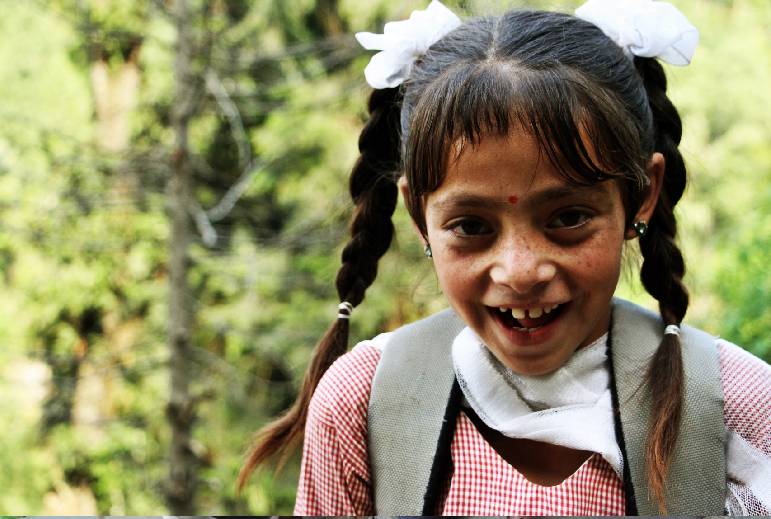Gendered dangers of digital education lurk in Telangana and Andhra
By Priyali Dhingra
Hyderabad: While the two Telugu states of Telangana and Andhra Pradesh have one of the best track records in narrowing the gender-based education gaps in the country, the digital realm brings about new challenges.
Economists have reflected that the absence of the physical infrastructure of a school may increase the gender gap in education that has narrowed down owing to years of policy advancements. The education of girl child now faces new barriers.
Young girls now face the absence of mid-day meals that was initially providing nutrition to them at school. This, in amalgamation with the lack of technological access to pursue an education that is digital, has pulled back the growing literacy rate the country has been able to achieve.
According to UDISE, Department of School Education and Literacy, Ministry of Human Resource Development, for the academic year 2018-19, the enrollment of girls in school in Telangana stood at 48.8 per cent and Andhra Pradesh at 47.79 per cent. This is significantly better than several north Indian states (Haryana 44.92 per cent, or Punjab at 44.43 per cent).
Nationally, as well, India has made progress on the state of education for girl child since independence. India, from a 9 per cent literacy rate in 1947, grew to a 47 per cent literacy rate in 2011, but economist Mitali Nikore feels that the digital adaptation of education can lose out most of this progress.
“Going to school is a great equalizer, but when there is no school, how do we take education to the students,” Mitali says.
ATTEMPTS AT PROGRESS
“The two Telugu states have been able to improve the status of girl child education primarily because they have been able to inculcate education as a value in their culture,” she adds. Since both have been able to create more jobs in the manufacturing and services sector, it has pushed more girls into pursuing an education.
“Telangana, particularly, has been able to push girls into education by increasing their aspirations to join the booming IT industry, which is more than willing to hire women as employees,” Mitali comments.
The fast-growing sectors of pharma and logistics have also created increased employment opportunities for women, pushing families to get their girls into education.
DANGERS
It is the digital convert, however, that Mitali feels can hinder the bar of progress being made. “One of the primary reasons girls in rural/ semi-urban areas are sent to school is the availability of mid-day meals,” she says, adding that studies have shown that it reduces the cost of school and one meal for the families of the girl, hence narrowing gender gaps in education.
The pandemic brought this scheme to a halt, as schools were ordered to be shut during the lockdown imposed nationally on March 24th. Understanding the essentiality of it, several states continued to provide mid-day meals to students at home. The Supreme Court, taking suo moto cognizance, issued an order post lock-down that states should continue mid-day meals.
While Andhra Pradesh government soon announced that it would continue to provide dry ration to 90 per cent of the scheme’s beneficiaries, the Telangana government has issued no such order till date.
Another lurking peril is that of accessibility. A study done by Harvard Kennedy School in 2018 showed that only 38 per cent of women in India own a mobile phone, in comparison to 72 per cent men. “Women, categorically, have been denied access to technology by families, especially young girls because of the perceived threat parents have towards the internet,” adds IPS Praveen Kumar, Secretary, Telangana Social Welfare Residential Schools Society.
Mitali further adds that the ownership of a mobile phone in households is governed by a complex set of norms. “In a family with a young boy and a young girl, the boy would perhaps be handed over the mobile phone first,” she says. In rural areas, where connectivity is low and only one mobile is available, there will be certain limitations for girls to access web-based education. “This might affect Andhra Pradesh more since it has a higher number of rural areas,” she adds.
“The situation will be even worse for girls coming from subaltern backgrounds, since deep-seated poverty because of centuries-old mechanisms is bound to affect their access to technology,” Mitali further comments.
POSSIBLE OUTCOMES
While neither Telangana nor Andhra Pradesh has issued orders to provide equipment (mobiles or laptops) to the students in government schools who may not be able to afford digital education, the social welfare schools in TS have come up with a solution of their own.
“We realized early on that digital education brings about a discrimination of class, caste and especially gender, so we moved to community-based learning,” IPS Praveen Kumar says. The students in these schools have been asked to start community learning classes in their areas, where they teach each other. “I am happy to say that more than half of the classes are being headed by our young girls,” Kumar adds.
�